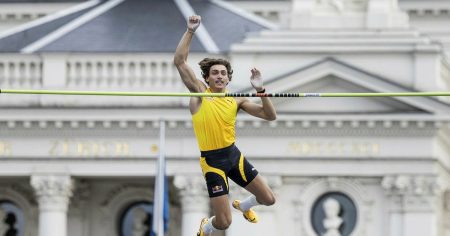Trondheim’s Treacherous Terrain: A Waxing Challenge for Cross-Country Skiers
The FIS Nordic World Ski Championships, held in Trondheim, Norway, at the cusp of February and March, represent the pinnacle of the cross-country skiing season. However, the Norwegian city presents a unique and formidable challenge for skiers and their waxing teams: the notoriously unpredictable weather conditions. Trondheim’s location, nestled between the cold air currents descending from the Swedish mountains and the moist, Atlantic winds, creates a microclimate at the Granåsen ski stadium that frequently hovers around the freezing point, often accompanied by precipitation. This volatile mix makes accurate ski waxing exceptionally difficult, a fact readily acknowledged by the Swedish national team and their waxing chief, Anders Svanebo. Svanebo describes these conditions as exceptionally challenging, highlighting the constant battle against temperature fluctuations and precipitation, which make choosing the right wax a gamble.
The Dilemma of Grip vs. Glide: Navigating Trondheim’s Fickle Conditions
The fluctuating temperatures and precipitation in Trondheim force skiers and their support teams to make crucial decisions regarding ski preparation, particularly in classic style events. The choice lies between using traditional kick wax for grip or opting for skis with a mechanically structured base, known as "ruggade skidor" in Swedish. This decision is further complicated by the length and demanding nature of the 50km classic races for both men and women, where optimal ski performance is paramount. Historically, the Swedish team has struggled to find the perfect balance with structured base skis, adding another layer of complexity to their preparations for the Trondheim championships. Svanebo admits that mastering structured skis has been a persistent challenge and emphasizes its importance as a key area of development, not only for the upcoming World Championships but also for the 2026 Milan Winter Olympics, where similar conditions are anticipated. The team has invested time and resources, including on-site testing in Trondheim throughout the previous winter, to address this critical aspect of ski preparation.
A Waxing Rollercoaster: Experiences and Adaptations of Swedish Skiers
Swedish skier Ebba Andersson vividly describes the capricious nature of Trondheim’s weather, likening it to experiencing "four seasons in one training session," with sudden downpours followed by bursts of sunshine. This unpredictability makes accurate ski preparation a constant guessing game. Andersson recounts a previous World Cup race in Trondheim where her skis had excessive grip, hindering her performance. She also recalls an instance of dramatic weather shifts that led to many Russian skiers being completely mis-waxed, highlighting the significant impact of Trondheim’s variable conditions.
Home-Field Advantage?: Maja Dahlqvist’s Trondheim Tactics
Maja Dahlqvist, a member of the Swedish national team, finds herself in a unique position. Residing in Trondheim, she has firsthand experience with the city’s erratic weather patterns. This proximity, she believes, offers a distinct advantage in preparing for the World Championships. Dahlqvist describes training sessions where conditions can shift dramatically within minutes, mirroring the unpredictable nature of race day. Her strategy involves bringing multiple pairs of structured base skis to Trondheim for extensive testing throughout the winter. This hands-on approach allows her to fine-tune her ski selection, ensuring optimal performance under varying conditions, a crucial advantage given the challenges posed by structured base skis.
The Pursuit of Perfection: Sweden’s Ongoing Quest for Waxing Mastery
The Swedish team’s meticulous preparation underscores the critical role of ski waxing in cross-country skiing. In Trondheim, where conditions are notoriously fickle, finding the right wax can be the difference between victory and defeat. The team’s focus on developing expertise in structured base skis, coupled with Dahlqvist’s localized testing regime, demonstrates their commitment to overcoming the specific challenges presented by Trondheim’s unique microclimate. Their efforts reflect a broader understanding that successful ski racing requires not only physical prowess and technical skill but also a deep understanding of the interplay between weather, snow conditions, and ski preparation.
The Human Element in a Technological Sport: The Importance of Experience and Adaptation
While technology plays an increasingly important role in ski preparation, the human element remains crucial. The experience of skiers like Andersson and Dahlqvist, combined with the expertise of waxing specialists like Svanebo, is invaluable in navigating the complexities of Trondheim’s unpredictable weather. Their ability to adapt to rapidly changing conditions, to learn from past mistakes, and to constantly refine their strategies will be key to their success at the World Championships. The challenges posed by Trondheim’s weather serve as a potent reminder that in cross-country skiing, as in many other sports, the ability to adapt and innovate is often the key to achieving peak performance.














